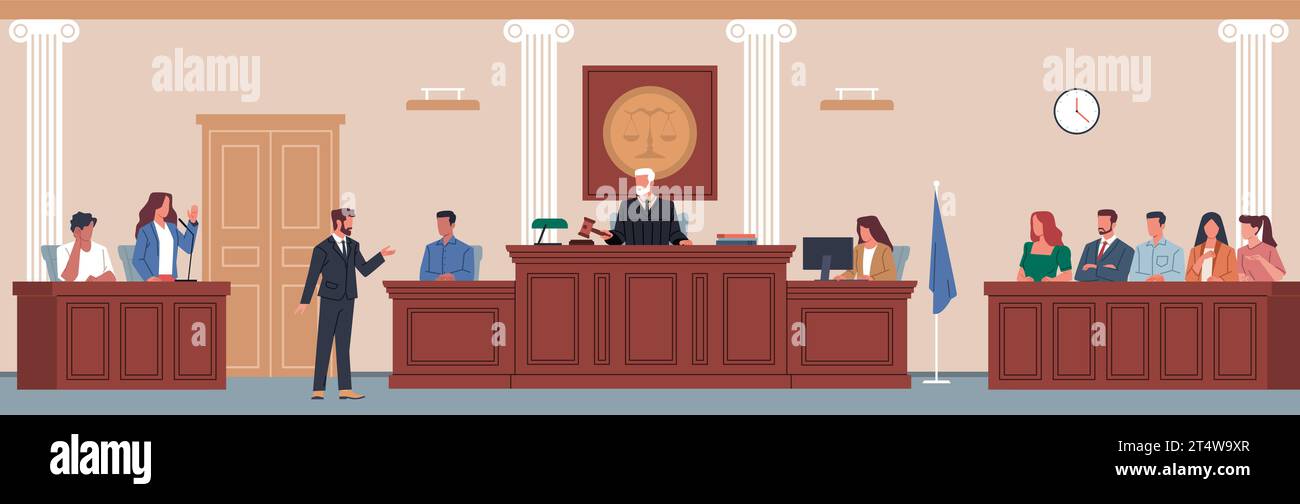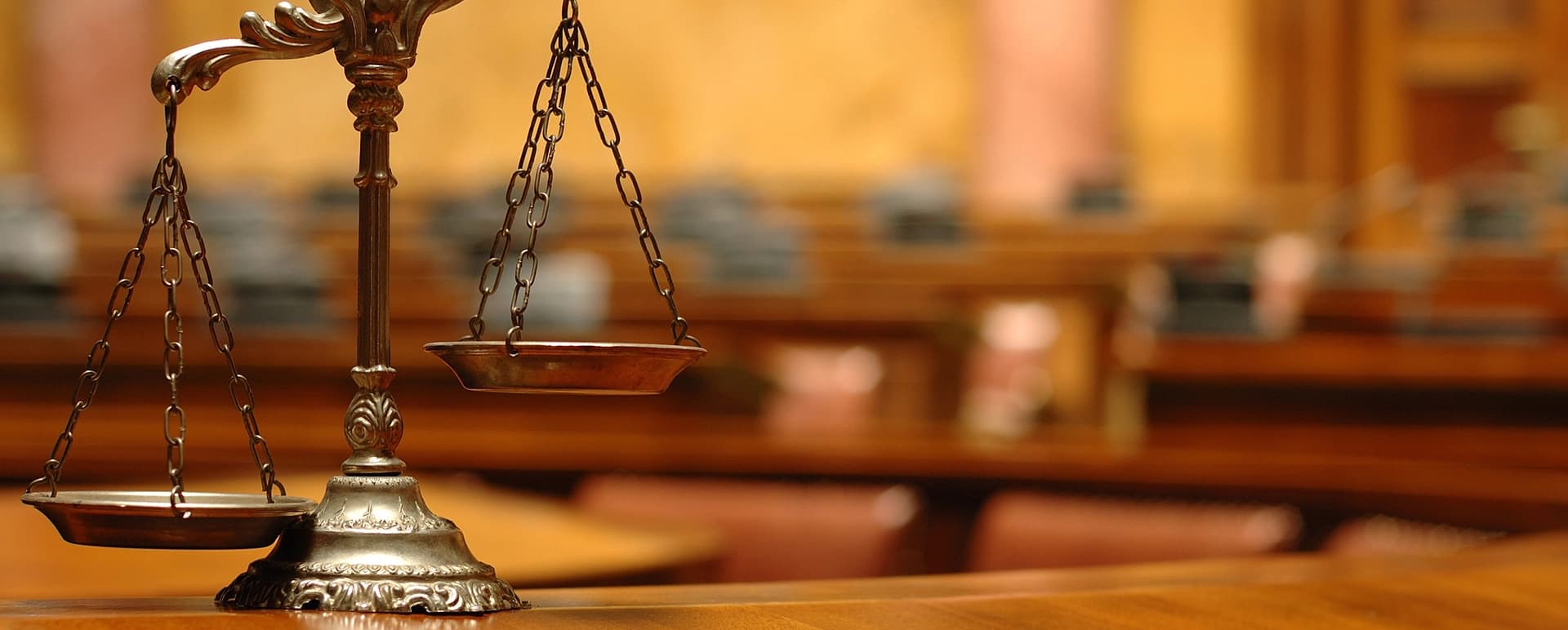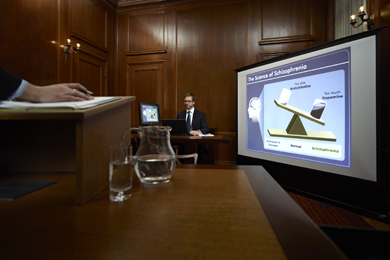Trial Presentation Creating Impactful Displays for Courtroom Success
Trial Presentation Creating Impactful Displays for Courtroom Success
Blog Article
Mesmerize the Court: Essential Aspects of a Powerful Test Discussion
In the realm of legal campaigning for, the capability to mesmerize a court is extremely important to the result of a trial (trial presentation). Important components such as understanding the target market, crafting a compelling narrative, and understanding verbal and non-verbal communication are vital elements of a reliable discussion. Additionally, the tactical use of aesthetic aids can dramatically boost comprehension and retention of essential debates. As these aspects link, they develop a cohesive technique that not only informs but also involves jurors on numerous degrees. What specific methods can really transform a common discussion right into a remarkable experience for the court?

Recognizing Your Target Market
Comprehending your audience is a pivotal element of reliable trial discussion. A successful discussion depends upon the capacity to realize the demographics, values, and tendencies of jurors. This comprehension educates just how arguments are mounted, proof exists, and psychological allures are crafted, making certain that the message reverberates with the jurors on a personal degree.
Research suggests that jurors originated from varied histories and might have varying degrees of understanding regarding lawful process (trial presentation). Therefore, it is essential to stay clear of lawful lingo that could estrange or puzzle them. Instead, utilizing clear, relatable language promotes engagement and comprehension. Furthermore, comprehending the jurors' possible predispositions and life experiences enables the trial presenter to prepare for objections and address problems proactively.
Effective test presentation likewise entails observing jurors' reactions throughout the process. Engaging with jurors as people rather than a collective device is important in promoting a solid connection in the court room.

Crafting a Compelling Narrative
Crafting an engaging narrative is crucial in assisting jurors through the intricacies of a situation. A well-structured narrative not just simplifies intricate lawful concepts yet likewise involves jurors on a psychological level, making the details much more relatable and remarkable.
To accomplish this, attorneys need to start by recognizing the core message they want to convey. This message must resonate with the jurors' worths and experiences, promoting a connection that goes beyond simple realities. The story must unfold realistically, presenting occasions in a clear sequence to avoid complication. This sequential method can aid jurors follow the development of events, stressing domino effect.
Incorporating human aspects-- such as individual stories or narratives-- can further boost the narrative's influence. These aspects evoke compassion, allowing jurors to imagine the consequences of the situation on real lives. In addition, utilizing a regular theme throughout the presentation strengthens the major argument, making it much easier for jurors to preserve vital factors.
Ultimately, a compelling narrative transforms a test discussion from a plain address of facts into a convincing tale that captivates the jury, encouraging them to deliberate with both reason and emotion.
Utilizing Visual Help
Including his response visual aids into a trial presentation can dramatically enhance jurors' understanding and retention of details. Aesthetic materials such as graphes, representations, photos, and videos can change intricate legal concepts and proof right into quickly digestible layouts. By engaging multiple detects, these aids enable jurors to envision the case's crucial elements, making it simpler for them to follow along and realize complex details.
In addition, properly designed visual help can highlight crucial points and highlight relationships in between different items of evidence. Timelines can effectively show the sequence of events, while annotated pictures can make clear particular details appropriate to the situation. This not only help in understanding however additionally strengthens the narrative presented by the lawyer.
Excessively intricate or cluttered visuals may bewilder jurors and detract from the message. Eventually, reliable aesthetic interaction can be a powerful tool in convincing jurors and aiding them get to informed final thoughts.
Understanding Verbal Communication
Effective verbal interaction is crucial in a trial presentation, as it functions as the key methods through which attorneys communicate their debates and connect with jurors. Grasping this ability includes quality, persuasion, and interaction. Attorneys need to articulate their points clearly and concisely, avoiding legal lingo that may puzzle jurors. Simplicity in language promotes understanding and assists jurors understand complicated issues presented throughout the trial.
Moreover, tone and pacing substantially effect how messages are obtained. A certain tone communicates authority, while suitable pacing allows jurors to soak up info without feeling bewildered. Lawyers ought to also differ their vocal inflections to highlight key factors and preserve jurors' interest throughout the discussion.
Furthermore, the organization of spoken disagreements is necessary. Structuring the narrative rationally and coherently helps jurors adhere to the attorney's logic, making it easier for them to maintain important info. Using influential methods, such as narration, can likewise enhance the psychological resonance of the arguments offered, consequently creating an extra profound link with jurors.
Inevitably, grasping verbal communication not only reinforces a lawyer's situation but additionally fosters trust fund discover here and connection with the court, substantially improving the chances of a positive verdict.

Engaging With Body Language
Nonverbal interaction plays an essential function in trial discussions, often sharing messages that words alone can not share. Body language, encompassing gestures, posture, faces, and eye get in touch with, substantially influences just how jurors regard the reputation and genuineness of the presenter. see page A certain stance, with shoulders back and an open stance, can impart count on, while closed-off body movement might suggest defensiveness or unpredictability.

Facial expressions should show the emotions connected with the case, enhancing the narrative existing. A genuine expression throughout a touching minute can elicit compassion and reinforce the emotional charm. Ultimately, grasping body movement is necessary for effective trial discussions, as it enhances verbal interaction and develops a compelling existence that reverberates with the jury.
Final Thought
To conclude, captivating the jury demands a strategic method that incorporates understanding the audience, crafting an engaging story, utilizing visual aids, grasping spoken interaction, and engaging through body language. Each aspect plays a crucial role in producing an effective test discussion that reverberates with jurors on both emotional and intellectual levels (trial presentation). By integrating these elements successfully, lawyers can considerably improve their capacity to encourage and affect court decision-making
Report this page